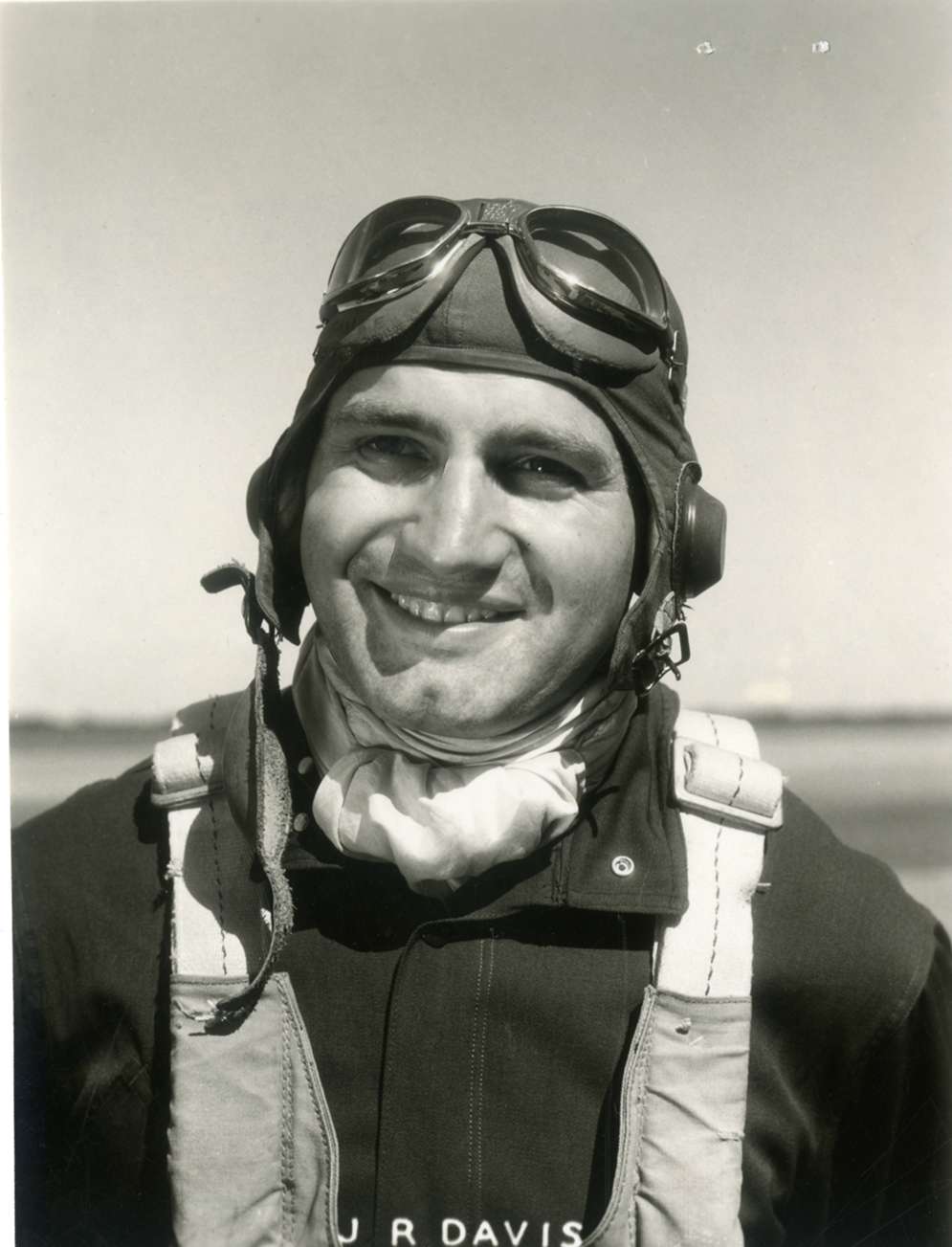Biography
Year at ISU: 1940
The Davis family was a devoted family to both Iowa State and our nation’s armed forces. Going back to Harry K. Davis Sr who was a US Army veteran as well as a class of 1909 Iowa State alumnus. Harry married a fellow Iowa State College graduate named Coral Roberts from the class of 1910. The couple stayed in Ames and settled down in a home at 413 10th street. Harry and Coral had five sons Robert, James, Harry Jr., Ramon, and Paul as well as two daughters, Katherine and Coral. Three of the sons went to Iowa State - James, Harry Jr, and Ramon, and eventually joined the Army during World War II. A fourth brother, Paul, also joined the Army air forces reserve in 1943.
James R Davis was born in Ames in 1916 and graduated from Ames High School in 1936. He was one of the three Davis boys to attend Iowa State. After his time at Iowa State James joined the US army air forces in 1941 like his brothers who would follow him. James became a 2nd lieutenant as a reconnaissance pilot of the 91st bomb squadron and was stationed in the Philippines during the second World War. One of his other brothers, Harry, also was stationed in the Philippines, part of an artillery regiment.
In 1942 James was taken as a prisoner of war after the capture of the Philippines by Japanese forces. It is very possible that lieutenant Davis was forced to walk in the Bataan death march. A grueling journey of prisoners of war to Japanese prison camps. Davis was kept in the Cabanatuan prison camp for two years until he was transferred to a slave labor camp. In late 1944 when the US began to retake the Philippines. Japan hastily withdrew from the islands trying to take as many resources, citizens, and prisoners of war as they could back to Japan. The Japanese used requisitioned merchant ships for this purpose. These ships were given the nickname of hell ships by allied prisoners due to the inhumane conditions they faced when being transported. The hell ships were not only POW transports but also carried military supplies and sometimes Japanese soldiers. The ships were painted battleship gray and carried no markings to indicate they carried POWs. While carrying both military supplies and prisoners, these ships blurred the distinction between military targets and non-combatants and were often mistakenly targeted by the allies. Allied aircraft and submarines often destroyed hell ships because of the Japanese soldiers and weapons onboard not knowing that they also carried POWs below deck.
James was forced onto the hell ship Oryoku Maru on December 13th of 1944. This ship was built as a luxury liner before the war but was converted into a hell ship by the Japanese. James and 1,600 other POWs were loaded into the holds below deck. Men were packed in until there was no room to move, very little air for everyone, and the temperature rose to over 100 degrees. Men immediately began passing out from suffocation and dehydration. On December 14th aircraft from the USS Hornet and the USS Cabot began attacking the Oryoku Maru and its escort ships. Due to the chaos of the attacks some POWs tried charging up the single hatch out of the hold. Japanese soldiers indiscriminately shot into the darkness to quell the riot. The bombs and bullet holes did allow more ventilation and light down into the hold which helped the POWs breathe easier. The Oryoku Maru was not only transporting POWs but also Japanese civilians back to the mainland. During the attacks the POWs heard the cries of people dying and could feel blood drip onto them from the decks above. When the USS Hornet called off the attack for the night the Japanese began evacuating civilians from the ship in lifeboats. At the same time prisoners began going mad from the heat and dehydration with deadly fights erupting between each other.
On the morning of the 15th the planes resumed their attack crippling the ship and causing it to sink. As the water began to rise POWs began desperately trying to escape forcing the Japanese to abandon ship. The Japanese once again began shooting at the horde of desperate prisoners as they boarded their last lifeboats. It was at this moment the POWs realized that the Japanese intended for them to go down with the ship. More than 1200 POWs dove into the water and swam the less than half mile to shore. Once ashore Japanese soldiers shot some in the water before rounding up the survivors on land. It is impossible to know when but somewhere in this chaos of hell James Davis was killed. James was not the only Iowa State service member killed on the ship, Captain Tomas Henry Delamore also from Ames was killed in the sinking as well. Those who survived the sinking did not fare much better, these survivors were then put on yet another hell ship and were sent to Mainland Japan and forced to do hard labor. By the time the war ended fewer than 200 of the original 1600 POWs that were on board the Oryoku Maru survived Japanese imprisonment to come home.
For the atrocities against the prisoners of war on their grueling journey to the Japanese mainland the leading Guard Commandant was found guilty of war crimes by the allied forces and was executed. All the guards on board the Oryoku Maru were given long prison sentences for their roles in abusing and killing their prisoners of war.
